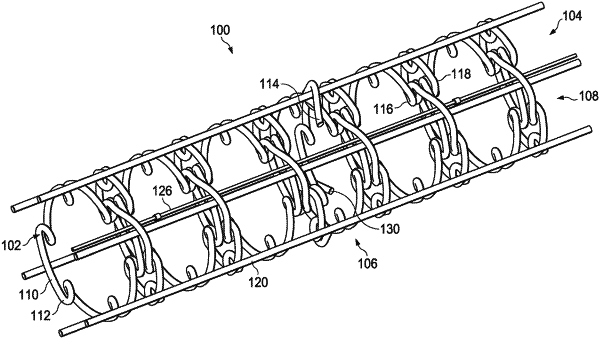| CPC A61F 2/885 (2013.01) [A61F 2/82 (2013.01); A61F 2/90 (2013.01); A61L 31/041 (2013.01); A61L 31/18 (2013.01); A61F 2250/001 (2013.01); A61F 2250/0067 (2013.01); A61F 2250/0098 (2013.01)] | 19 Claims |

|
1. A method for forming a stent having a furled, small-diameter state and an expanded, large-diameter state, the method for forming the stent in the furled, small-diameter state comprising:
winding a polymer element in a first rotational direction to form a first plurality of central lobes arranged longitudinally along a stent axis from a first stent end to a second stent end, wherein each of the first plurality of central lobes is spaced along the stent axis, and wherein the polymer element has a first terminal end and a second terminal end and a reserve portion of the polymer element at the first terminal end is reserved;
winding the polymer element in the first rotational direction to form a second plurality of central lobes, wherein the polymer element is wound from the second stent end until the second terminal end is in a middle section of the stent,
winding the reserve portion of the polymer element in a second rotational direction to form a third plurality of central lobes, wherein the polymer element is wound from the first stent end until the first terminal end is in the middle section of the stent,
wherein during the winding of the first plurality of central lobes, the second plurality of central lobes and the third plurality of central lobes, at least one peripheral lobe is wound in each of the first plurality of central lobes, the second plurality of central lobes and the third plurality of central lobes; and
wherein the second plurality of central lobes and the third plurality of central lobes form an opposing winding pattern to the first plurality of central lobes along the stent axis.
|